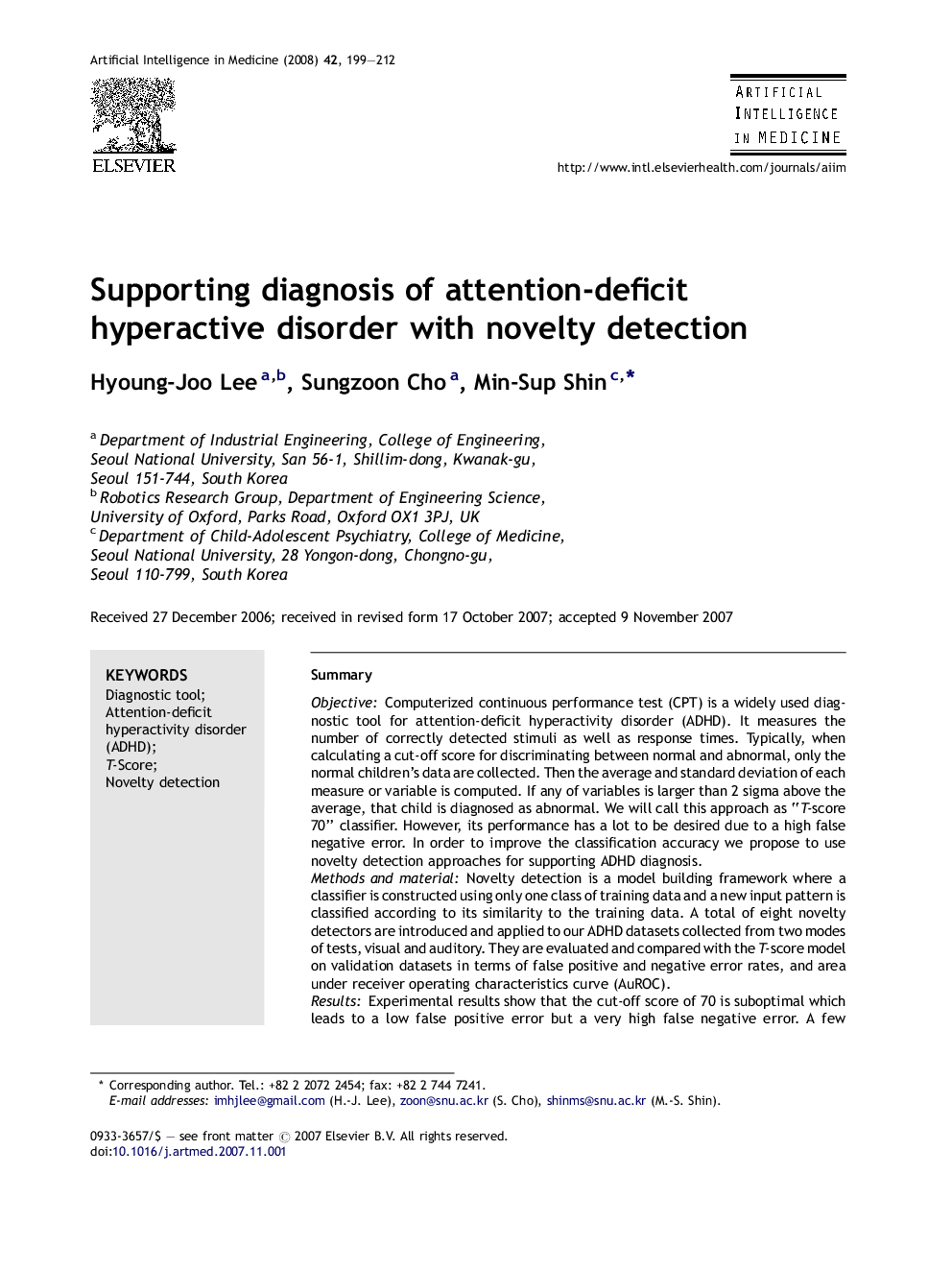| کد مقاله | کد نشریه | سال انتشار | مقاله انگلیسی | نسخه تمام متن |
|---|---|---|---|---|
| 377795 | 658830 | 2008 | 14 صفحه PDF | دانلود رایگان |

SummaryObjectiveComputerized continuous performance test (CPT) is a widely used diagnostic tool for attention-deficit hyperactivity disorder (ADHD). It measures the number of correctly detected stimuli as well as response times. Typically, when calculating a cut-off score for discriminating between normal and abnormal, only the normal children’s data are collected. Then the average and standard deviation of each measure or variable is computed. If any of variables is larger than 2 sigma above the average, that child is diagnosed as abnormal. We will call this approach as “T-score 70” classifier. However, its performance has a lot to be desired due to a high false negative error. In order to improve the classification accuracy we propose to use novelty detection approaches for supporting ADHD diagnosis.Methods and materialNovelty detection is a model building framework where a classifier is constructed using only one class of training data and a new input pattern is classified according to its similarity to the training data. A total of eight novelty detectors are introduced and applied to our ADHD datasets collected from two modes of tests, visual and auditory. They are evaluated and compared with the T-score model on validation datasets in terms of false positive and negative error rates, and area under receiver operating characteristics curve (AuROC).ResultsExperimental results show that the cut-off score of 70 is suboptimal which leads to a low false positive error but a very high false negative error. A few novelty detectors such as Parzen density estimators yield much more balanced classification performances. Moreover, most novelty detectors outperform the T -score method for most age groups statistically with a significance level of 1% in terms of AuROC. In particular, we recommend the Parzen and Gaussian density estimators, kernel principal component analysis, one-class support vector machine, and KK-means clustering novelty detector which can improve upon the T-score method on average by at least 30% for the visual test and 40% for the auditory test. In addition, their performances are relatively stable over various parameter values as long as they are within reasonable ranges.ConclusionThe proposed novelty detection approaches can replace the T-score method which has been considered the “gold standard” for supporting ADHD diagnosis. Furthermore, they can be applied to other psychological tests where only normal data are available.
Journal: Artificial Intelligence in Medicine - Volume 42, Issue 3, March 2008, Pages 199–212